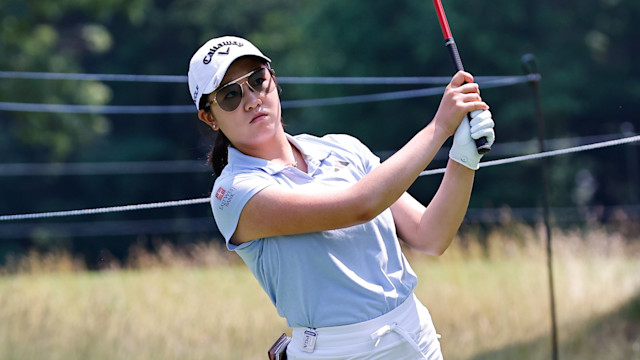quick coaching
Two Drills to Help You Avoid Three-Putts
By Brendon Elliott, PGA
Published on

Ruoning Yin of China was victorious this past Sunday at Baltusrol Golf Club. Her win at the KPMG Women's PGA Championship was her first major and her second LPGA victory of the year.
Yin's final round 67, which included five birdies on the Lower Course, was enough to secure a one-shot win. What struck me the most about Yin’s win was the notion of “one shot” and how critical it is in golf — especially among the professional ranks. It was a one-shot win in this case, but during an entire tournament, one shot each day can mean a lot.
The winning putt!!#KPMGWomensPGA pic.twitter.com/DwGYbTFCsR
— KPMG Women's PGA Championship (@KPMGWomensPGA) June 25, 2023
Yin won a major, yes, but as PGA.com's Ryan Adams reported, there was one thing that was top of mind for Yin, beyond the victory.
“I didn’t care if I won or not, just no three putts,” Yin said. “And I did that, too.”
You can take a lot from that post-round statement. Yin had a clear plan going into the day, and avoiding three putts was, in her mind, going to be one of her keys to victory at Baltusrol.
Putting is that one part of the game that golfers of all ability levels have the most realistic potential of doing better at the quickest. Especially if you keep some key aspects of putting in mind.
Trusting Lines Through Gate Training
For most amateurs, three putting, or putting poorly in general, comes more from a lack of focus and concentration than anything else. Spending more time looking at your line, picking a dedicated breakpoint, and making a more confident stroke to that can go a very long way.
Ultimately, paying attention to these aspects will save you a stroke or two in your next round and beyond. Try this drill:
What You Will Need
- Three Balls
- Two Tees
Step 1
Find a breaking putt that has at least 5-10 feet of break and about 15 feet from the hole. If you are adventurous, maybe find something with a little more break.
Step 2
Study your chosen putt. When you find the apex point of the line in which you think the putt will break, place two tees in the ground, the width of two golf balls side-by-side.
Step 3
Putt five sets of three balls with two goals in mind. The first, and primary goal, is to get the balls to roll through the gate. Your second goal is to get each putt within two-putt range of the hole. Make an overall goal for yourself for the 18 total putts: how many get through the gate, and how many you two putt.
Repeat these steps from different distances, and on different breaking putts.

Changing Up Your Distance Control Issues
Three putting is often the result of having poor distance control. The art of distance control lies in having good tempo and understanding that the distance in which your putt goes comes from the length of your stroke, and not a change in your tempo.
What You Will Need
- Three Balls
- Two Tees
- 5 Quarters
Step 1
Find a straight putt approximately 30 feet away from your starting spot.
Step 2
Place a quarter, just to the side of your line of putt to the hole, at 10, 15, 20 and 25 feet.
Step 3
Putt your first three balls, trying to stop each equidistant to the 10’ quarter. Repeat this for each quarter thereafter.
Step 4
Repeat step three, but now place your two tees to the side of your putter representing the distance back and through you feel that you need to take the putter for each length putt. Those tees will serve as a visual guide for you as you try to keep a consistent length of your stroke for each distance putt.
Step 5
Now it gets really fun! Repeat step four, but with this twist in place — put your last quarter on the back, or top of your putter head (depending on make type of putter you have). If your tempo is good, and not rushed, you should be able to keep the quarter on the back of your putter head.



